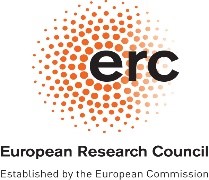Received:
2022-01-15 | Accepted:
2022-03-13 | Published:
2022-03-30
Title
Innovations and the circular economy: a national and regional perspective
Abstract
The introduction of innovative practices compatible with the objectives of the circular economy is one of the main enablers for transforming current production patterns towards more sustainable and competitive systems. Understanding whether and to what extent firms are introducing circular-oriented innovations allows monitoring where we stand in the circular transition and thus which further efforts are needed to achieve a resource-efficient economy. This study is based on data from two surveys on Small and Medium Enterprises: the first one reaches 4565 companies located throughout Italy (in the two-year period 207-2018) and the second one focuses on 1603 companies operating in the Emilia-Romagna region (in the three-year period 2017-2019). The analysis is aimed at offering a broad picture of the level of involvement of national and regional firms in the implementation of circular innovation. Despite the overall positive performance, there appears to be a fragmented adoption of circular innovation in terms of firms' size, technological intensity of the sectors and in accordance with the geography and the productive specialization of the territory. In general, circular innovation mainly involves firms operating in low-technology-intensity sectors in Southern Italy and more technological intensive sectors in Northern Italy and it is more widespread among large firms. On the contrary, in Emilia-Romagna, the distribution of circular innovation mainly concerns medium-sized firms, especially those belonging to low and medium technology-intensive sectors, moreover companies in the provinces of Modena and Parma show higher adoption rates.
Keywords
circular economy, eco-innovation, circular innovation, small and medium enterprises, business models, regional studies
JEL classifications
R10
URI
http://jssidoi.org/ird/article/91
DOI
HAL
Pages
57-70
Funding
This is an open access issue and all published articles are licensed under a
Creative Commons Attribution 4.0 International License
References
Antonioli, D., & Mazzanti, M. (2009). Techno-organisational strategies, environmental innovations and economic performances. Micro-evidence from an SME-based industrial district. Journal of Innovation Economics & Management, (1), 145-168 https://doi.org/10.3917/jie.003.0145
Search via ReFindit
Antonioli, D., Mancinelli, S., & Mazzanti, M. (2013). Is environmental innovation embedded within high-performance organisational changes? The role of human resource management and complementarity in green business strategies. Research Policy, 42(4), 975-988 https://doi.org/10.1016/j.respol.2012.12.005
Search via ReFindit
Arundel, A., & Kemp, R. (2009). Measuring Eco Innovation. UNU-MERIT Research Memorandum.
Search via ReFindit
Barbieri, N., Ghisetti, C., Gilli, M., Marin, G., & Nicolli, F. (2016). A survey of the literature on environmental innovation based on main path analysis. Journal of Economic Surveys, 30(3), 596-623 https://doi.org/10.1111/joes.12149
Search via ReFindit
Beise, R., & Rennings, K. (2005). Lead markets and regulation: A framework for analyzing the international diffusion of environmental innovations. Ecological Economics, 52(1), 5-17. https://doi.org/10.1016/j.ecolecon.2004.06.007
Search via ReFindit
Berkhout, F.(2011). Adaptation to climate change by organizations. WIREs Climate Change, 3, 91-106. https://doi.org/10.1002/wcc.154
Search via ReFindit
Bocken, N. M. P., de Pauw, I., Bakker, C., & Van der Grinten, B. (2016). Product design and business model strategies for a circular economy. Journal of Industrial and Production Engineering, 33(5), 308-320 https://doi.org/10.1080/21681015.2016.1172124
Search via ReFindit
Cainelli, G., & Mazzanti, M. (2013). Environmental innovations in services: manufacturing-services integration and policy transmissions. Research Policy, 42(9), 1595-1604. https://doi.org/10.1016/j.respol.2013.05.010
Search via ReFindit
Cainelli, G., D'Amato, A., & Mazzanti, M. Resource efficient eco-innovations for a circular economy: Evidence from EU. Research Policy, 49(1), 103827. https://doi.org/10.1016/j.respol.2019.103827
Search via ReFindit
Carrillo-Hermosilla, J., del Río, & P., Könnölä, T. (2010). Diversity of eco-innovations: reflections from selected case studies. J. Clean. Prod. 18, 1073-1083. https://doi.org/10.1016/j.jclepro.2010.02.014
Search via ReFindit
De Jesus, A., Antunes, P., Rui, S., & Mendonça, S. (2019). Eco-innovation pathways to a circular economy: Envisioning priorities through a Delphi approach. J. Clean. Prod. 228, 1494-1513. https://doi.org/10.1016/j.jclepro.2019.04.049
Search via ReFindit
European Commission (2015). Communication from the Commission to the European Parliament, the Council, the European Economic and Social Committee and the Committee of the Regions. The European Union action plan for the circular economy, COM (2015) 614/2.
Search via ReFindit
Flachenecker, F., & Rentschler, J. (2019). From barriers to opportunities: enabling investments in resource efficiency for sustainable development. Public sector Economics, 43(4), 345- 373. https://doi.org/10.3326/pse.43.4.2
Search via ReFindit
Jabbour, A.B, Frascareli, F., & Jabbour, C. (2015). Green supply chain management and firms' performance: Understanding potential relationships and the role of green sourcing and some other green practices. Resources Conservation and Recycling, 104, 366-374. https://doi.org/10.1016/j.resconrec.2015.07.017
Search via ReFindit
Kemp, R., Arundel, A., Rammer, C., Miedzinski, M., Tapia, C., Barbieri, N., Tűrkeli, S., Bassi, A.M., Mazzanti, M., & Chapman, D., Diaz López, F., McDowall, W. (2019). Maastricht Manual on Measuring Eco-Innovation for a GreenEconomy. Innovation for sustainable development network. Maastricht, The Netherlands.
Search via ReFindit
Maldonado-Guzman, G., Garza-Reyes, J.A., & Pinzón-Castro, S.Y. (2020). Eco-innovation and the circular economy in the automotive industry. Benchmarking: An International Journal, 1-15. https://doi.org/10.1108/BIJ-06-2020-0317
Search via ReFindit
Marin, G. (2014). Do eco-innovations harm productivity growth through crowding out? Results of an extended CDM model for Italy. Research Policy, 43(2), 301-317. https://doi.org/10.1016/j.respol.2013.10.015
Search via ReFindit
Zoboli, R. (2018). L'economia circolare per riusare anche i saperi? In Gargiulo T., Sylos Labini, M. Paolazzi L. (A cura di), Le sostenibili carte dell'Italia, 139-166.
Search via ReFindit












 RSS 1.0
RSS 1.0